- Home & News
- Health A-Z
- Drugs & Medications Center
- Healthy Living
- Women's Health
- Men's Health
- Pet Health
- Oral Health
- Emotional Health
- Mental Health Communities
- Find a Therapist
- Green Living
- 50+: Live Better, Longer
- Sex & Relationships
- Skin & Beauty
- Healthy Skin TV
- Sexual Health Communities
- See All Topics
- Women's Health Communities
- Skin & Beauty Community
- Men's Health Communities
- Healthy Eating & Diet
- Parenting & Pregnancy
- Teen Health
- Pet Health
Slideshow: A Visual Guide to Migraine Headaches
WebMD Slideshows
View our slideshows to learn more about your health.
What Is a Migraine?
A migraine is a headache with throbbing pain that is usually worse on one side of the head. The pain is often severe enough to hamper daily activities and may last from four hours to three days if untreated. More than one in 10 Americans, including one in 6 women, have migraines, but many have been told mistakenly that they have a sinus or tension headache. Foods, stress, and hormones can be migraine triggers.
Migraine Symptoms
Throbbing pain typically occurs on one side near the temples, forehead, and eyes. Migraines can make you very sensitive to light, sound, or mild exertion, such as climbing the stairs. Many people have nausea, vomiting, or vision problems. The pain can be disabling, forcing people to miss work or other activities.
Migraine Warning Signs
Some people may have a change in mood before a migraine begins. They may become more excitable or irritable or depressed. Others may detect a sensation, such as a funny smell or taste. They may feel more fatigued, yawn frequently, or experience muscle tension. About 1 in 4 people experience this prodrome phase, which can occur as early as 24 hours before any head pain.
Trigger: Flashing Lights
Migraines may be set off by some specific cause, such as flickering lights. This could be a reflection from snow or water or from fluorescent bulbs or television or movie screens. Wearing polarizing sunglasses outside and using daylight spectrum fluorescent bulbs inside may help.
Trigger: Anxiety and Stress
Emotional stress is a common trigger of migraines. While it's impossible to completely avoid stress, relaxation exercises can help you cope. Inhale and exhale slowly, letting the air fill you and then deflate like a balloon. Some people find that thinking of a peaceful scene or listening to favorite music can help.
Trigger: Lack of Food or Sleep
It's important for people prone to migraines to have a regular pattern of meals and sleep. Low blood sugar from skipping meals can trigger a migraine. Eating too much sugar also can cause a spike, then a "crash" in blood sugar. Drink water throughout the day to avoid dehydration and sleep at least 6 to 8 hours a night.
Trigger: Hormonal Changes
For many women, migraines are tied to their menstrual cycle, occurring either a few days before or during their period, when estrogen levels drop. Some women may benefit from anti-inflammatory medication before their headaches begin, or hormonal birth control such as pills, patches, or rings. Others may have no benefit or worse migraines with hormonal birth control.
Trigger: Tyramine
Aged, fermented, and stored foods have higher levels of tyramine, a substance created from the breakdown of the amino acid tyrosine. Tyramine may cause blood vessels to constrict then expand, and it may be a trigger for some migraines. Some headache experts advise limiting fermented or aged foods, such as cheese, soy sauce, pickles, and pepperoni.
Tracking Personal Triggers
Find out what triggers your migraines by keeping a headache diary. Each time you suffer from a migraine, make a note about the warning signs (the "prodrome"), triggers, and severity. If you can discover some of your personal triggers, you may be able to avoid future headaches.
Who Gets Migraines?
Women are three times more likely to have migraines than men. If you have a close relative with migraines, you are much more likely to have migraines, too. Experts believe migraines may be related to mutations in genes that affect certain areas of the brain. Migraine is also more common among people who have epilepsy, depression, asthma, anxiety, stroke, and some other neurologic and hereditary disorders.
Migraines in Children
About 5% of the children with headache problems suffer from migraines. Both boys and girls can get migraines, but after puberty they are more common among girls. Children may have symptoms other than headache, including stomach pain (abdominal migraine) or forceful and frequent vomiting (cyclic vomiting). If young children become wobbly on their feet, pale, and fussy, or have involuntary eye movements or vomiting, they may have a form of migraine called benign paroxysmal vertigo.
Diagnosing Migraine
Migraines are diagnosed primarily from symptoms, but your doctor may want to do a brain scan to rule out other causes of your headache, such as a brain tumor or bleeding in the brain. A CT scan uses special X-rays to create cross-sectional images of the brain. An MRI uses radio frequency pulses and a magnetic field to create images of the brain.
Treatment: Over-the-Counter Drugs
Combinations of common pain relievers and anti-inflammatories may help: aspirin, naproxen sodium, ibuprofen, acetaminophen. Some have been formulated specifically to treat migraines. However, overuse may actually make headaches worse or may lead to ulcers or other gastrointestinal problems.
Treatment: Triptans
Triptans, the most common medication prescribed for migraines, are most effective when taken early in an attack. Common triptans include Amerge, Axert, Frova, Imitrex, Maxalt, Relpax, Treximet, and Zomig. People with high blood pressure, heart disease, stroke, and other conditions may not be able to take triptans. And because of possible serious drug interactions, you should talk to your doctor about other medications you take such as antidepressant or antiseizure medicine. Side effects of triptans include nausea, dizziness, tingling, numbness, and chest pain.
Treatment: Ergotamines
If triptans don't give you relief, your doctor may prescribe dihydroergotamine (Migranal) or ergotamines (Cafergot or Migergot) as tablets, nasal sprays, or injections. These drugs narrow the blood vessels and can cause nausea, dizziness, muscle pain, or a bad taste in the mouth. They are not usually as effective as triptans and also have some interactions with other drugs.
Is Your Treatment Working?
After you have treated two or three headaches, ask yourself some simple questions. Are you getting the relief you need? If not, you should ask your doctor about altering the treatment. Be sure you take your medications early in the attack -- at least within two hours of migraine pain.
Limits of Medication Use
Overuse of medications can sometimes lead to chronic headaches. You shouldn't take prescribed medicines more than two times per week. You can get rid of the chronic headaches by tapering and discontinuing your medication – under a doctor's supervision. Pain medicines containing narcotics should be taken only when other medications fail to relieve pain because they can be habit-forming.
Treatment: Preventive Medicines
If your migraines are frequent or very severe, you may need to take a medicine every day to prevent attacks. Timolol (Blocadren), divalproex sodium (Depakote), propranolol (Inderal), and topiramate (Topamax) are common, approved preventive medicines. They are drugs that were designed to treat high blood pressure or to prevent seizures.
Alternative Therapy: Acupuncture
Acupuncture is a form of Chinese medicine that uses very fine needles inserted in specific spots to balance the body's energy flow. Some researchers have found acupuncture causes the brain to release chemicals that affect pain. However, studies on the effectiveness of acupuncture for migraine symptoms has been mixed.
An Advantage of Aging
Migraines most often strike in the prime of life – between the ages of 20 and 60. While elderly people still get migraines, they often decrease in severity and frequency as we age, or even disappear entirely. Good management of migraines may help you get rid of your migraines for good.
When You Need Quick Care
Any new headache that is unusually severe or lasts more than a couple of days should be checked by a doctor. It's also important to let your health care provider know if the pattern of your headaches changes -- for example, if there are new triggers. If you have a headache accompanied by paralysis, confusion, fever, or stiff neck, seek emergency medical care.
Women's Health Newsletter
Find out what women really need.
Advertisement
Reviewed by Louise Chang, MD on August 23, 2010
IMAGES PROVIDED BY:
1) Fancy
2) 3D4Medical.com
3) Eric Hernandez / Sheltered Images
4) Jon Feingersh / Blend Images
5) Gustoimages/Photo Researchers, Inc. and Hank Morgan/Rainbow
6) Image100
7) Radius Images
8) John Rowley / Digital Vision
9) Raymond Forbes / age footstock
10) FoodCollection
11) Image Source
12) Glow Cuisine
13) Steve Pomberg / WebMD
14) Pascal Broze
15) Liane Cary / age footstock
16) Science Photo Library RF
17) WebMD
18) Ingram Publishing
19) Bruce Laurance / White
20) Hemera
21) Tetra Images
22) AJPhoto / Photo Researchers, Inc.
23) Image Source
24) William McCoy / Rainbow
25) Polka Dot Images
26) Fancy
27) Radius Images
REFERENCES:
American Headache Society.
American Pain Foundation.
American Migraine Foundation.
Lifting the Burden: A Global Campaign to Reduce the Burden of Headache Worldwide.
National Headache Foundation.
The Journal of the American Medical Association Patient Page: "Migraine Headache."
National Institute of Neurological Disorders and Stroke.
WebMD Medical Reference: "What Are Silent Migraines?"
eMedicine from WebMD: "Pathophysiology and Treatment of Migraine and Related Headache."
eMedicineHealth: "Migraine Headache."
eMedicineHealth: "Migraine Headache in Children."
WebMD Health News: "Migraines May Ease With Age."
WebMD Medical Reference: "Alternative Treatments for Migraines and Headaches."
National Center for Complementary and Alternative Medicine: "Acupuncture for Pain."
WebMD Medical Reference: "Frequently Asked Questions About Headaches."
WebMD Medical Reference: "Tips for Avoiding Migraine Triggers."
WebMD Medical Reference: "Migraine Headache Treatment."
WebMD Feature: "Fighting Food-Related Headaches.
WebMD Medical Reference from Healthwise: "Ergotamines for Migraine Headaches."
This tool does not provide medical advice. See additional information: 
THIS TOOL DOES NOT PROVIDE MEDICAL ADVICE. It is intended for general informational purposes only and does not address individual circumstances. It is not a substitute for professional medical advice, diagnosis or treatment and should not be relied on to make decisions about your health. Never ignore professional medical advice in seeking treatment because of something you have read on the WebMD Site. If you think you may have a medical emergency, immediately call your doctor or dial 911.
© 2010 WebMD, LLC. All rights reserved.
Health Solutions From Our Sponsors
©2005-2011 WebMD, LLC. All rights reserved.
WebMD does not provide medical advice, diagnosis or treatment. See additional information.




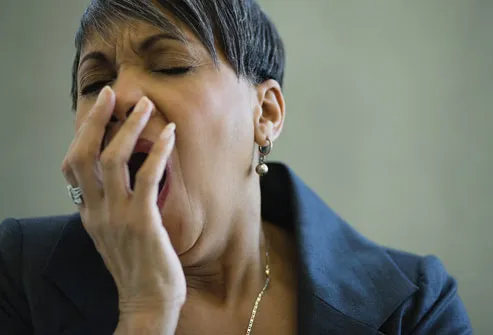




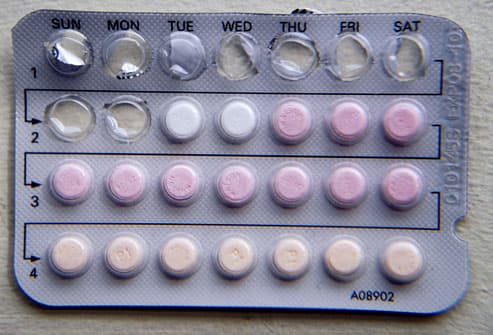



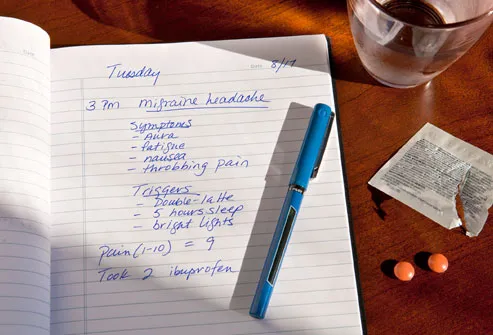

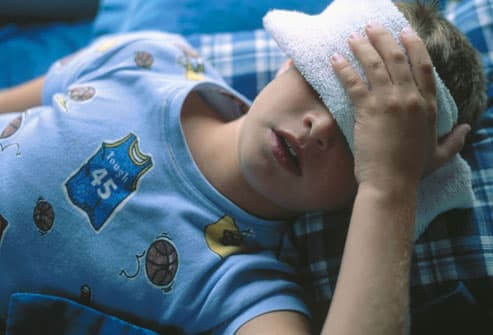

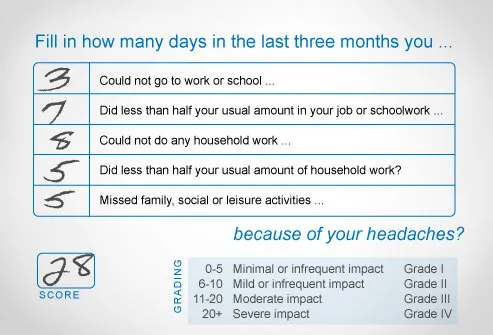


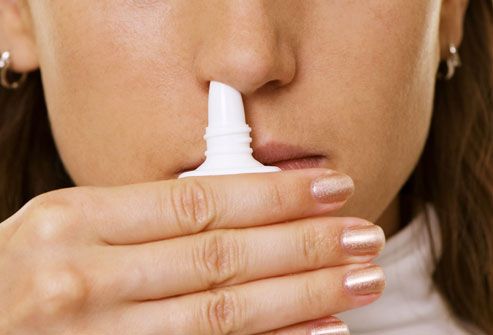


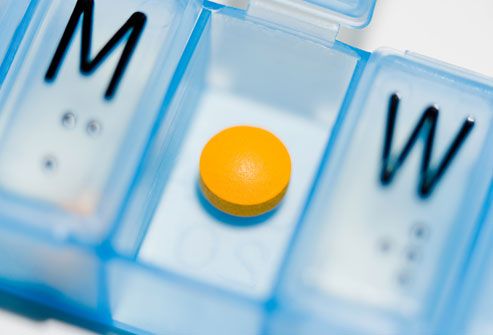
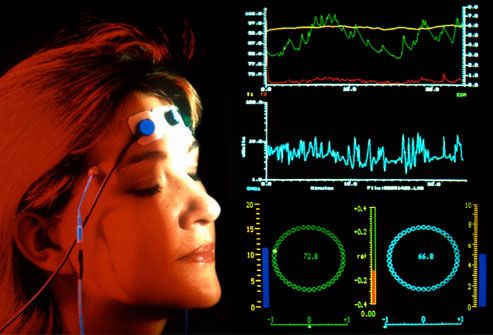










Keine Kommentare:
Kommentar veröffentlichen